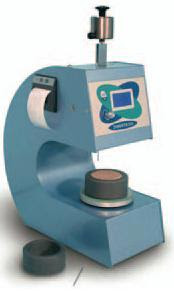In laboratory setting time of cement is determined by standard Vicat apparatus. The initial setting time as well final setting time of cement is a indication of quality of cement. Now we will learn what the both setting times are.
a. Initial setting time:
This is the time when cement starts to stiffen remarkably
b. Final setting time:
Thus setting time of cement indicates the hydration of cement is in either normal or not satisfactory. In our regular construction process with cement it is desired that initial setting time should not be too small and final setting time should not be too large.

To determine the both setting time both Gillmore needle and Vicat needle arrangement are used. The most common method is Vicat needle test. The specification of setting time of Portland Cement according to ASTM C150 are:
Test Method
|
Set Type
|
Time
Specification
|
Vicat
|
Initial
|
≥
45 minutes
|
Final
|
≤
375 minutes
|
|
Gillmore
|
Initial
|
≥
60 minutes
|
Final
|
≤
600 minutes
|
Setting time of cement may be affected by:
1. Fineness of cement
2. Water-cement ratio
3. Chemical content(like gypsum)
Now what are the difference between concrete and cement?
There have wide difference between setting time of both. Though cement with some aggregate with presence of water produce a concrete mass, the setting time of cement is not the same that of concrete. In construction industry it is more important to know the setting time of concrete than that of cement. In concrete mix design sometimes some admixture or additives are used which may change widely the setting time of concrete. In ready mix concrete industry it is very common to use retarding admixture to delay the setting time until the concrete is reached to the placement site. The setting time of concrete is dependent on:
a. Water/cement ratio
b. Temperature condition
c. Type of cement
d. Admixture
Even curing methods According to ASTM C 403 the setting time of concrete is determined by pentrometer test.
No comments:
Post a Comment